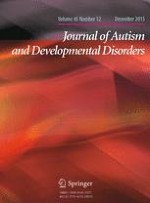30-08-2015 | S.I. : ASD in Adulthood: Comorbidity and Intervention
Emotion Dysregulation and Anxiety in Adults with ASD: Does Social Motivation Play a Role?
Gepubliceerd in: Journal of Autism and Developmental Disorders | Uitgave 12/2015
Log in om toegang te krijgenAbstract
Young adults with ASD and no intellectual impairment are more likely to exhibit clinical levels of anxiety than typically developing peers (DSM-5, American Psychiatric Association, 2013). This study tests a mechanistic model in which anxiety culminates via emotion dysregulation and social motivation. Adults with ASD (49 males, 20 females) completed self-report measures on emotion regulation, caregivers completed measures on ASD severity and both on social anxiety. Results indicated that emotion dysregulation (p < .001; p < .05) and social motivation (p < .05, p < .001) significantly predicted social anxiety as reported by caregivers and young adults respectively. However, social motivation did not appear to play a moderating role in the relationship between emotion regulation and anxiety, even when controlling for social awareness. Significant predictor variables of social anxiety varied based on reporter (i.e. caregiver versus young adult), with difficulty engaging in goal-directed behaviors during negative emotions serving as the only shared predictor.
